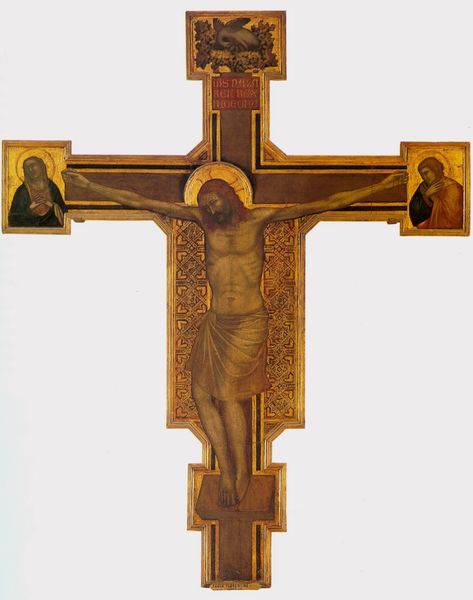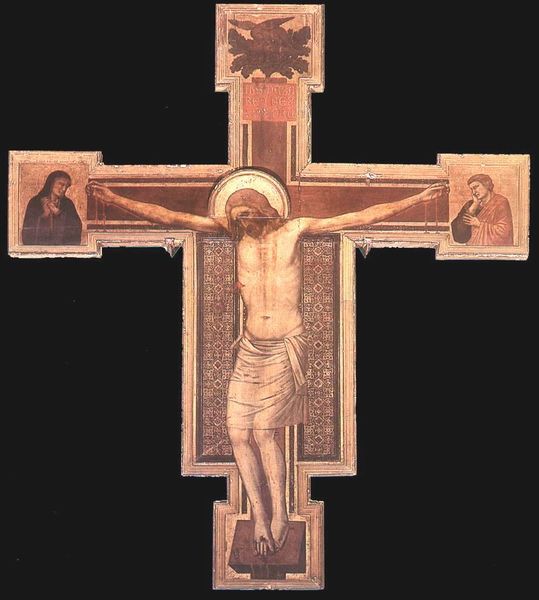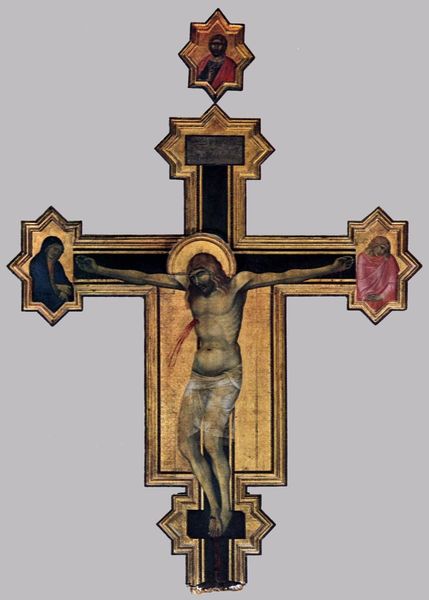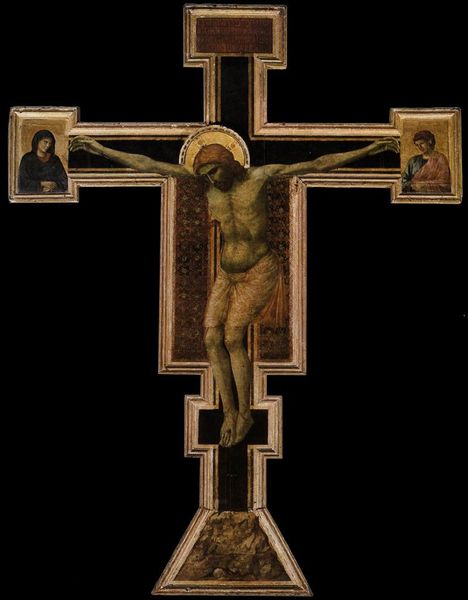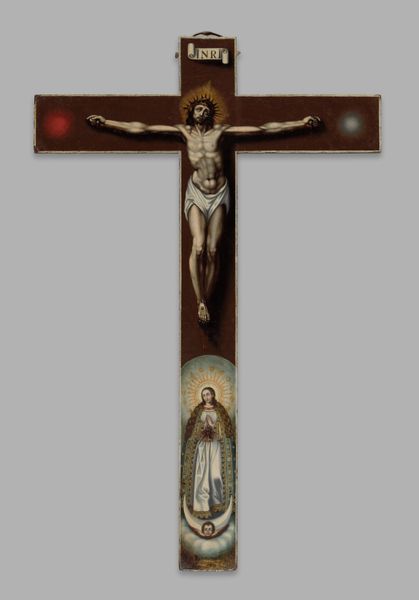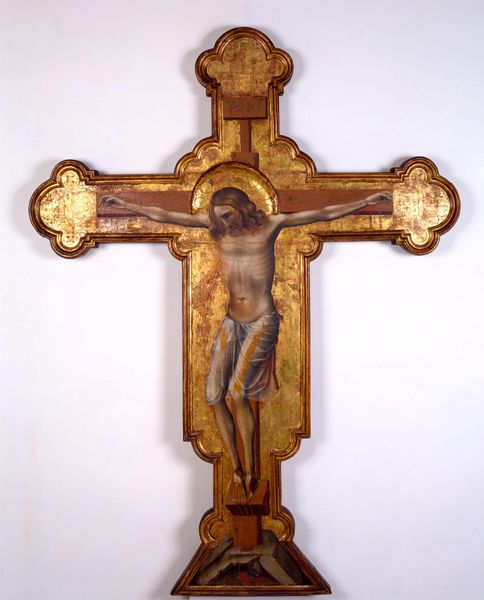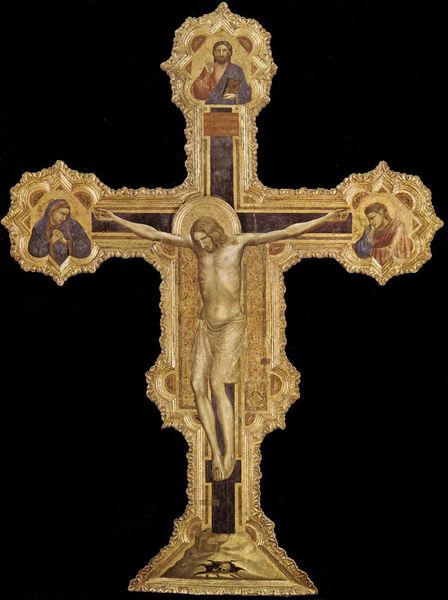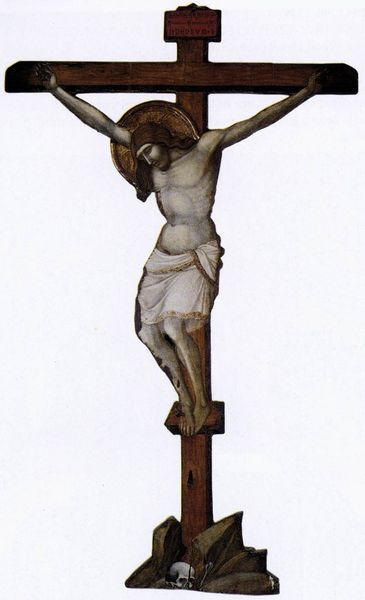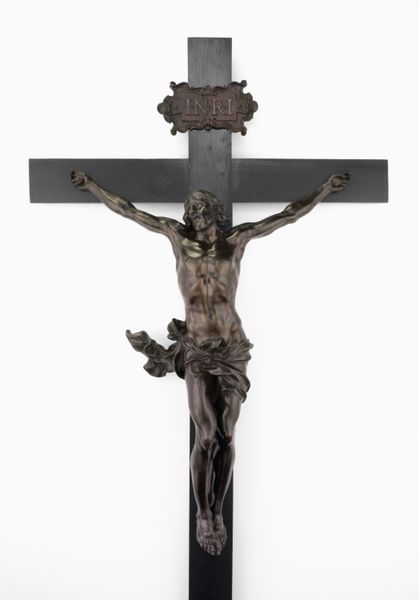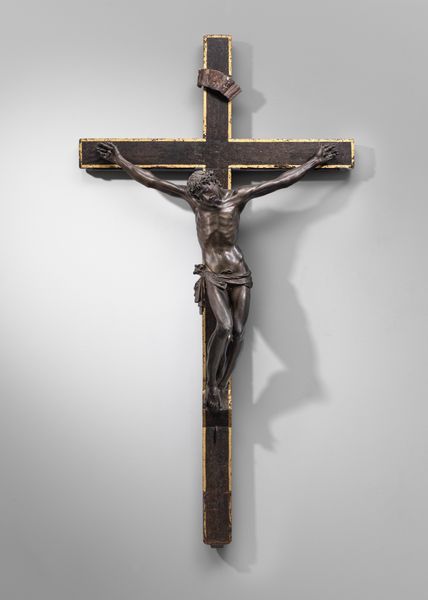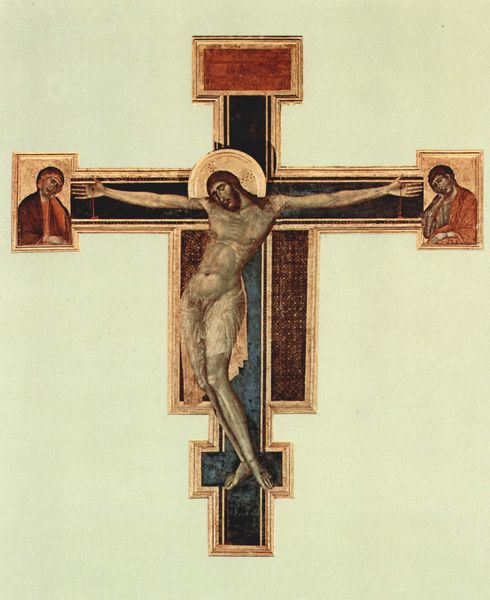
tempera, painting
#
medieval
#
tempera
#
painting
#
gothic
#
christianity
#
history-painting
#
italian-renaissance
#
nude
#
christ
Dimensions: 430 x 303 cm
Copyright: Public domain
Curator: Let’s focus on Giotto's "Crucifixion" painted around 1317, now hanging in Santa Maria Novella, Florence. Giotto’s frescoes significantly influenced Renaissance art, particularly in depicting more realistic human forms compared to the prevalent Byzantine style. Editor: It strikes me as both stark and strangely serene. There's a rawness in Christ's figure, a real sense of suffering, but his face has a profound stillness. The work seems both theological and corporeal, as a study on how power can operate, or be violently applied. Curator: Indeed. Giotto’s departure from stylized figures was groundbreaking. This tempera-on-wood panel exemplifies a pivotal shift. Unlike earlier, more symbolic representations, here we witness the humanity of Christ—his pain, his physical presence—bringing the religious narrative closer to the viewer’s own experience of the real world. It became one of his ways of advocating for empathy toward humanity as a response to suffering. Editor: And you know what I'm drawn to the golden patterning behind the figure of Christ in this work. This use of pattern, although still holding on to Medieval art traditions, adds such complexity to the composition, and in my eyes acts as this kind of tension in terms of the politics within art tradition. What I see is the political tension. Curator: Good point! The painting exists because the church needed visual narratives to educate, especially when literacy rates were low. The politics are embedded. It makes sense. Yet, while "Crucifixion" served this didactic function, Giotto injected it with a new emotional depth, which altered how religious subjects would be understood, making art even more politically relevant. Editor: So it is. How incredible to think this tempera on wood has prompted reflections on art and belief, then and now. Thanks to Giotto. Curator: It is indeed a remarkable example of art historical relevance in the narrative. Giotto changed it all.
Comments
No comments
Be the first to comment and join the conversation on the ultimate creative platform.
